ISD5 Research Design Lecture
ISD5
Plan
Design
Report
Research Plan
“Research design refers to the overall strategy utilized to carry out research that defines a succinct and logical plan to tackle established research question(s) through the collection, interpretation, analysis, and discussion of data”
Research Design
Research is:
• Complex
• Challenging
• Time consuming
• Expensive
1. Identify the research problem
2. Review the literature
3. Specify clear hypotheses (questions)
4. Describe the necessary data to test the hypothesis and how it will be collected
5. Outline the data analysis which will be applied
General Design
• Design is a discipline
• Important to healthcare
• Identify a problem
• Research the problem
• Define the problem
• Create Research Question
• Outline evidence needed
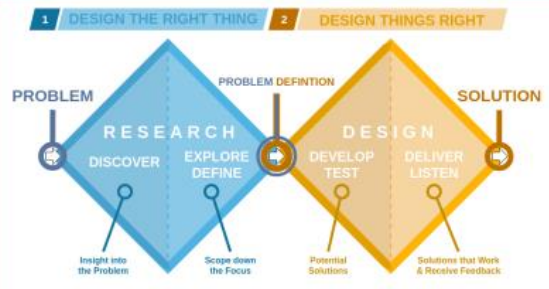
Research Design
1. Identify the research problem
2. Review the literature
What knowledge or theories currently exist?
• Philosophical
• Contextualisation of the research
• Beliefs, philosophy and incentives
Not all research is equal
Not all research is conducted for the “right” reasons
Not all research should be trusted
Hierarchy of Evidence
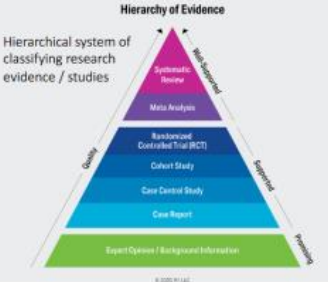
Meta-analysis: →Statistical merging of individual studies to estimate pooled effect
Systematic Review: →Review multiple studies to assimilate findings of primary research
Randomised Controlled Trial: →Participants randomised into intervention or controls
Cohort: →Identify participants and assess their outcome of interest
Case-Control: →Identify Cases with disease and match to controls
Case Report: →individual case findings and management
Expert Opinion: →People agree on what is considered best practice
Epidemiology
“The study of how often diseases occur in different groups of people and why”
“Epidemiological Data is used to plan and evaluate strategies to prevent illness and as a guide to the management of patients in whom disease has already developed”
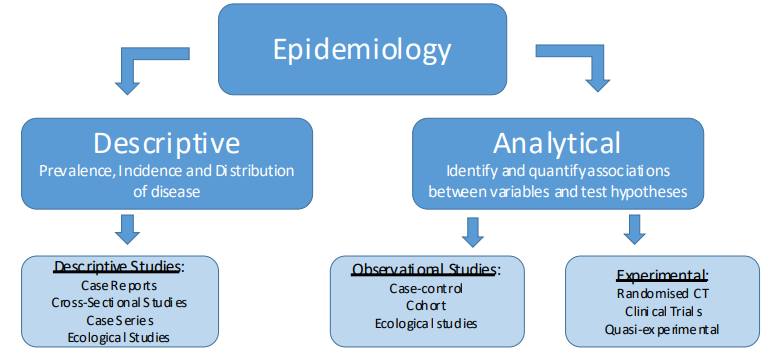
RCT: Experimental
CS, CC, and CR: Descriptive
Tooth Decay
How many children have tooth decay in Merseyside?
If we :
Access children's dental records
Record the number of children with caries
Descriptive
Cross-sectional (Prevalence)
Which children are more likely to get decay?
Retrospectively
Which children are more likely to get decay?
Prospectively
Experimental Studies
True Experimental Design:
1. Introduce an intervention or manipulate a variable
2. Perform randomisation of participants
3. Include an experimental control group
Randomised Control Trial
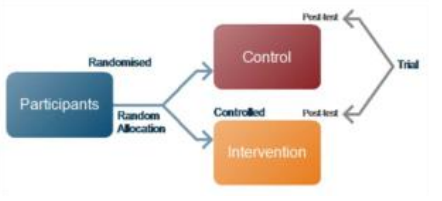
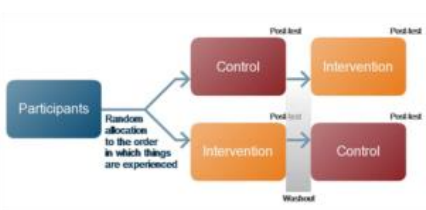
Randomised Control Trial
• Not feasible to conduct research with everyone
• The sample should represent the entire population
• Randomisation ensures confounding factors are evenly distributed
• Statistical "power" refers to the probability of actually detecting an effect if there is a true effect to detect.
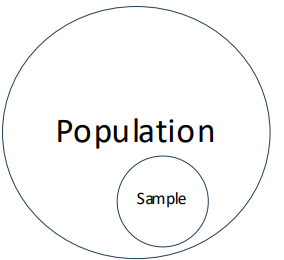
Randomised Control Trial Phases
Phase 0 – Earliest of drug trials – small number with low dose of drug.
Phase 1 – How much rug is safe to give, what are the side effects, does it help treat the disease
Phase 2 – Does the drug work well enough for larger phase 3 trial, which disease the drugs work best for, more information on side effects, better evidence for dose
Phase 3 – Large trials, comparing new drug to current standard of care.
Phase 4 – After drug has been licensed, investigates longer term effects and more wider use
UK Health Research Authority (HRA)
1. Is there a clear research question?
2. Will the proposed study design answer the research questions?
3. Are the assumptions used in the sample size calculation appropriate?
4. How will safety and efficacy be monitored during the trial?
5. How will the trial be registered and subsequently published?
Assessing Research Quality
What factors can influence the quality of the research?
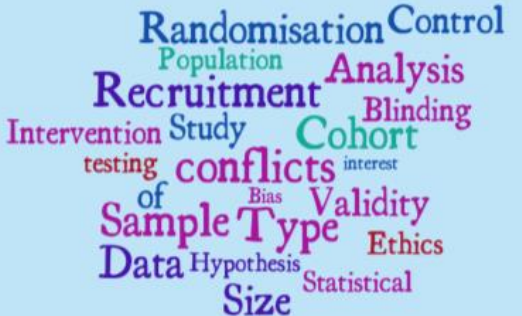
Tooth Decay
Patients, Clinicians & Health care providers → What is best?
Important issues
Funding by large organisations
Involved experience researchers
Assess study design of primary studies
Provide guidance based on quality of evidence
Research Organisations
Cochrane
CASP – critical appraisal
Difficult to teach
Difficult to learn
Practice Appraisal
Checklists can help
Consider the Hierarchy of evidence
Research Proposal
Involve experts as early as possible
Research Support Service
Publishing Study Protocols
Pragmatic = Effectiveness i.e. in the real world
PICO
Population:
→ NHS patients aged 12 years and over with one or more carious lesion extending into the pulpal third of dentine
Intervention:
→ Selective Caries removal
Control:
→ Complete Caries removal
Outcome:
→ Primary -- Clinical effectiveness and Cost-Benefit of intervention vs control
→ Secondary – Pulp exposure, pain, restoration failure, OH QoL, PROMs
Research Question
• Often the starting point for research – Ask BIG questions!
• The pro pose d research should answer the question
• Can form the overall paper aim or be broken down into the objectives
• Should form from a thorough and systematic appraisal of current literature
• The question will influence the study design
• If there is no clear hypothesis – Think - Hypothesis-Generating Experiments
“What can we see in the data that might need investigating?
Perfection does not exist!
• Use multiple experiments to provide confidence in your results.
• Use multiple methods if necessary.
• Sometimes you need to validate your results with repeats or further experiments.
Research Aims and Objectives
Research Aims:
Statement of general aim of the purpose of the project
• Usually broad and introductory
Research Objectives:
Specific statements indicating the key issues being focused on in the project
• Usually multiple, specific topics to be investigated
Hypothesis Testing
• Research studies should have one, well-defined hypothesis:
Primary Hypothesis
• The hypothesis must be tested during the research.
• Measurable & Specific ‘Consumption of sport energy drinks increases the risk of dental carious lesion development’
Null Hypothesis
• No association between variable and disease
• Always good practice to assume the null hypothesis is true then run test
e.g. ‘There is no association between sport energy drink consumption and dental carious lesion development’
Independent Variable:
• the altered/changed variable e.g. sport energy drink consumption
CAUSE
Dependent Variable:
• the variable being tested and measured e.g. presence of decay (DMFT)
EFFECT
Primary Outcome Measure
• The outcome that is being investigated
• Defined before start
• Contributes to sample size calculation
• Avoid collecting data and then performing statistical analysis
DATA DREDGING
Interventions vs Controls
Intervention:
• Study group which receives the intervention or manipulation of the variable
Control:
• Study group which does not receive an intervention or where the intervention cannot influence the dependent variable (Placebo).
Correlative vs Manipulative Study Design
Correlative – identifies if there are correlations or associations between different aspects of the study population.
Manipulative – experimenter changes a variable to assess its impact on an outcome variable
Confounding Factors
• Variables that may falsely create an apparent association which doesn’t exist or which hide actual associations
e.g. coffee causes cancer… …coffee drinkers were smoking whilst having their coffee
Strategies for avoiding confounding factors:
1. Exclude: Selection criteria
2. Randomise: so confounders will be evenly shared between groups
3. Statistics: Identify the confounders and statistically account for them
Randomisation
• Participants can be assigned to all groups
• If groups aren’t balanced, then results are biased and not representative
• Minimises bias
• Simple
• Block
• Stratified
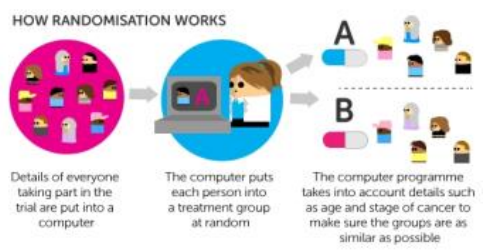
• Simple - AAAAAABAABAAAAA
• Block – AABBAB///ABAABB//BBBAAA
• Stratified – Grouped by strata and then randomised i.e. those with pain and those without.
Blinding/Masking
• Hiding the grouping/treatment from participant, investigator, statistician
Single: Investigator or Participant
Double: Investigator and participant
Ethical Approval
• Protect the participants (and their data)
• Beneficence – Doing what is best for the participant
• Non-maleficence – doing no harm and avoiding potential harm
• Autonomy – Respect for the participant's own independence and decision-making
• Justice – treat fairly
The responsibility of the principal investigator
Required for any research that involves human participants
• Fully informed
• Confidentiality
• Risks minimised
• Independence and conflict of interests should be explicit.
• All research facilities will have their own policy/guidelines to follow
NHS Ethics:
• Health Research Authority – Integrated Research Application System
University Ethics:
• UoL Form Manager
Patient & Public Involvement
Fundamental component of Health Research
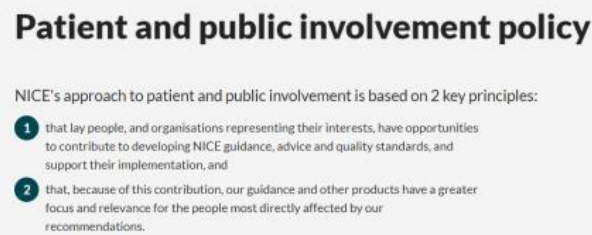
Research "carried out ‘with’ or ‘by’ members of the public rather than ‘to’, ‘about’ or ‘for’ them. It is an active partnership between patients, carers and members of the public with researchers that influences and shapes research."

Discussing the outcomes
• Discuss the relevance of the results
• Explore the underlying meaning of your results
• Any implications for future practice or research
• Possible improvements in methodology
Presenting your research...
Presentations: Local, Regional, National & International
Poster
Oral
Publications:
Dissertation/Thesis
Online
Society/Conference papers
Peer-reviewed journals
The Abstract
• Short summary of your research paper
• Approx 250 words
• Format can be journal dependent
• Includes key findings
Summary
• Research design is fundamental to high quality, reliable research.
• Understanding key aspects of design helps interpret research and guidelines
• Involve experts early on in planning
• Involve patients to understand what impact the research will have/is having.
• Don’t believe everything ( most things) you read in the literature and online